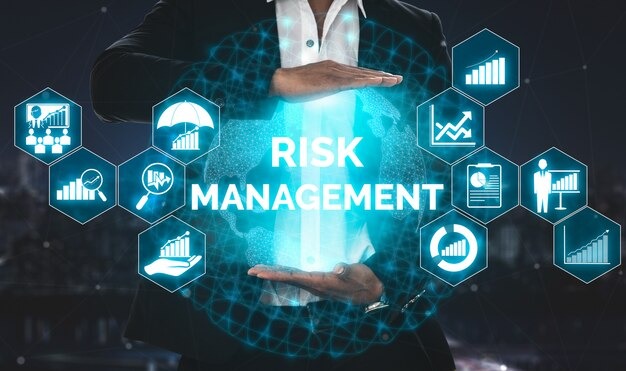Strategies for Effective Risk Management in Business
Published on February 4, 2025

Author: Yiga Richard
Risk is an inherent part of any business, but how companies identify, assess, and manage risks can determine their long-term success. Effective risk management strategies help businesses minimize potential threats, seize opportunities, and stay resilient in an ever-changing market.
In this article, we’ll explore key risk management strategies that can protect your business and drive sustainable growth.
1. Identify and Assess Risks
The first step in risk management is to identify potential risks and assess their impact. These risks can be categorized as:
📌 Operational risks – Issues related to internal processes, human errors, or system failures.
📌 Financial risks – Market fluctuations, economic downturns, or cash flow problems.
📌 Strategic risks – Poor business decisions or failure to adapt to market changes.
📌 Compliance risks – Legal or regulatory challenges that could impact operations.
Using a risk assessment framework like SWOT analysis (Strengths, Weaknesses, Opportunities, and Threats) or a risk matrix can help prioritize risks based on likelihood and impact.
2. Develop a Risk Management Plan
Once risks are identified, the next step is to develop a structured risk management plan. This includes:
✅ Defining risk tolerance – How much risk is acceptable before action is needed?
✅ Creating mitigation strategies – What steps can be taken to reduce risk impact?
✅ Assigning responsibilities – Who will oversee risk management efforts?
A well-defined risk management plan ensures preparedness and swift action when risks arise.
3. Implement Preventative Measures
Prevention is always better than cure. Businesses can mitigate risks by:
🛡 Strengthening cybersecurity – Implement firewalls, encryption, and regular security audits to prevent data breaches.
💰 Diversifying revenue streams – Reduce dependence on a single market or product to protect against financial downturns.
📜 Ensuring legal compliance – Stay up to date with industry regulations to avoid penalties or lawsuits.
🧑🤝🧑 Training employees – Educate staff on risk management best practices and potential threats.
By taking proactive measures, businesses can minimize risk exposure before issues arise.
4. Monitor and Adapt to Emerging Risks
Risk management is an ongoing process. Businesses must continuously monitor internal and external risks to adapt strategies accordingly.
📊 Regular risk assessments – Schedule quarterly or annual risk evaluations.
🛎 Real-time monitoring tools – Use AI-driven analytics to detect potential threats.
🔄 Adjust strategies as needed – Modify business operations based on new risks.
Being agile and responsive allows businesses to stay ahead of potential challenges.
5. Establish a Crisis Response Plan
Despite best efforts, risks can still materialize. A well-prepared crisis response plan ensures quick and effective action during emergencies. Key elements include:
🚨 Clear chain of command – Define roles and responsibilities in crisis situations.
📞 Crisis communication strategy – Have a plan for internal and external communication during a crisis.
🔧 Contingency planning – Develop backup solutions for critical business functions.
A solid crisis response plan can minimize damage and accelerate recovery when unexpected disruptions occur.
6. Invest in Business Insurance
While risk management strategies can mitigate threats, business insurance provides a safety net against uncontrollable risks. Consider:
🛡 General liability insurance – Covers legal fees and damages in case of lawsuits.
🏢 Property insurance – Protects against losses from natural disasters, theft, or damage.
👥 Cyber insurance – Provides coverage for data breaches and cyberattacks.
Choosing the right insurance policies can protect businesses from financial setbacks.
7. Foster a Risk-Aware Culture
Effective risk management isn’t just about policies—it requires a company-wide culture of risk awareness. Businesses can achieve this by:
💬 Encouraging open communication – Employees should feel comfortable reporting potential risks.
📚 Providing continuous training – Regular workshops and updates on risk mitigation strategies.
🏆 Recognizing proactive behavior – Reward employees who actively contribute to risk management efforts.
A risk-conscious workforce is a company’s best defense against potential threats.
Conclusion
Risk management is essential for any business aiming for long-term success and sustainability. By identifying risks, implementing preventative measures, monitoring threats, and fostering a risk-aware culture, businesses can reduce uncertainties and navigate challenges effectively.
🚀 Is your business prepared for unexpected risks? Start implementing a risk management strategy today to stay ahead of potential threats and build a more resilient organization!